
After the cultural impact of the Modernism architectural movement, the next big event to mold the city of Barcelona was the Universal Exposition of 1929. So visiting this places is important if you are sightseeing Barcelona!
After the success of the Universal Exposition / World Fair of Barcelona 1888, the government decided to further push the image of the Catalan industry by creating a new World fair in 1929. This lead to a major refurbishment city round, concentrating mainly in the surroundings of Mont Juïc
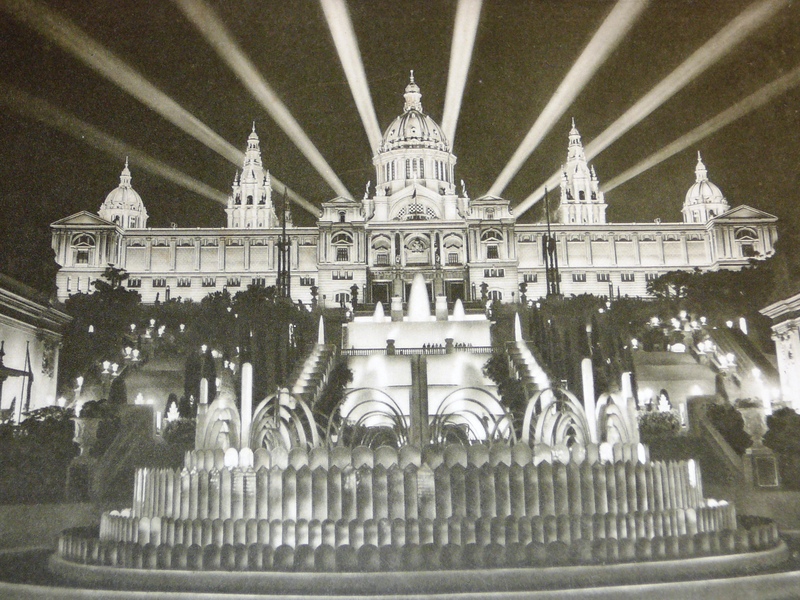
The organizers decided to center the fair around the electric industry starting in 1917 but thanks to the First World War it was postponed. After this turn of events the exposition was set to start in 1923 but thanks to the Coup d’Etat of Primo de Rivera it was postponed until 1929 when it finally started.

To arrive to the exposition area, you first had cross over Plaça Espanya. Today this plaza is one of Barcelona’s most iconic roundabouts. Around the plaza the organizers rose the necessary hotels and to further decorate the area the architect Antoni Darder designed the colonnade found around the plaza inspired in the baroque St Peters Plaza. Towering over the Plaza, the two Campinales inspired in those found in Piazza St Marc gave entrance into the World Fair. In the center of the roundabout, a Fountain of classic design can be found representing all the major Spanish rivers and the benefits the water gives to the community.
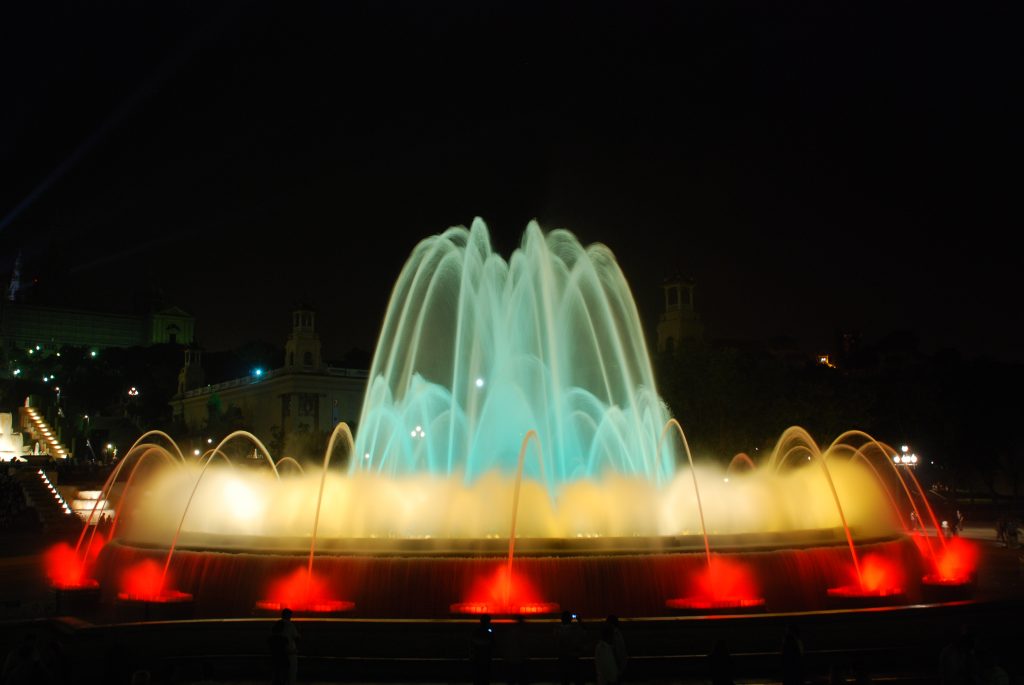
A boulevard connects Plaça Espanya with La Fuente Mágica de Montjuïc designed by Carles Buïgas. A revolutionary fountain was set which could play a water and light show. To this day every weekend you can visit the fountain to enjoy the light show! Puig I Cadafalch designed 4 columns of ionic order to represent the Catalonian flag these were set at the end of boulevard before mentioned, but the dictator Primo de Rivera order to demolish them. In 2010 the government decided to restore them.
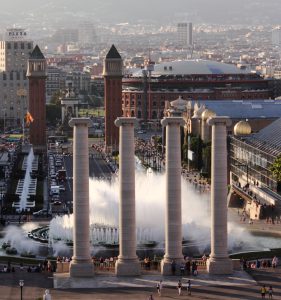
The Universal Exposition had several palaces along the area each dedicated to certain activities, like the Palacio de la metalurgia dedicated to new technology in the electric and motor industry, Palacio del Arte Textil compounding everything related to the textile art among many others.
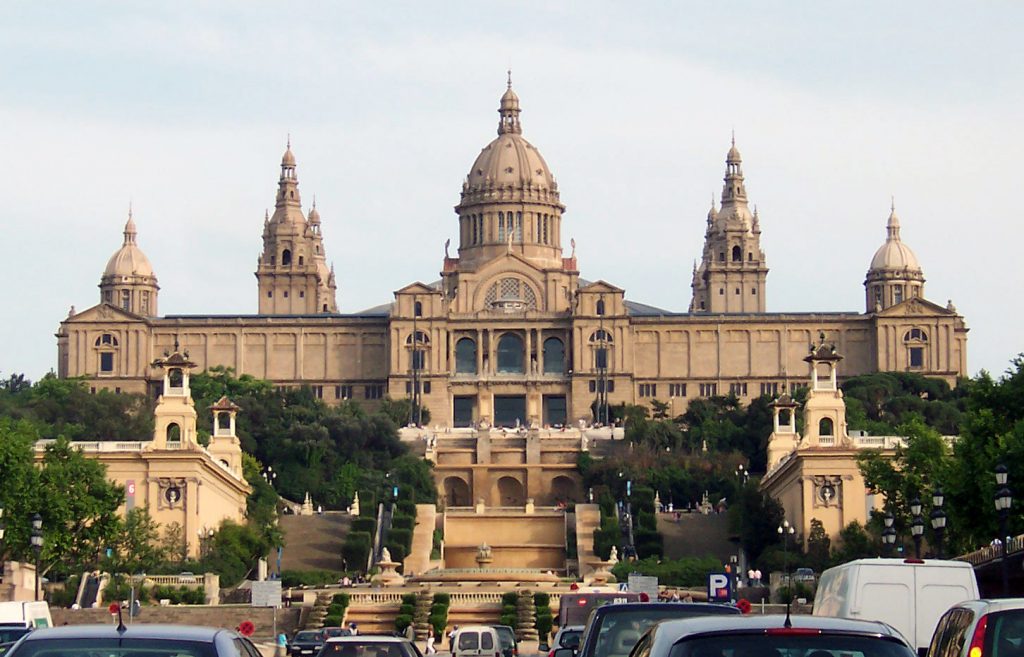
The main palace and exposition area was the Palacio Nacional. The building is of classic design inspired in the Spanish Renaissance. This palace was used mainly for the exposition of Spanish art. The building was constructed quickly and with cheap materials so it needed several refurbishment during the following years. Nowadays the building functions as Barcelona’s National Museum of Catalan Art.
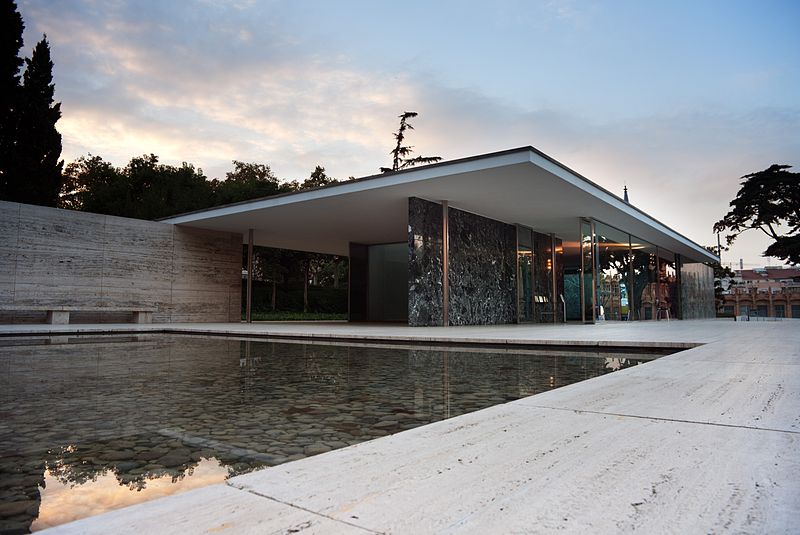
One of the World Fair Major attractions was Pabellón de Alemania designed by the famous Ludwig Mies van der Rohe. Experts describe this building as one of the renown architects best works. The architect followed his moto “Less is More” and decided for an international style. The pavilion also included the famous Silla de Barcelona a ground breaking design of interior design. This style of chair can be bought nowadays for the exuberant amount of 4,000USD$!

Thanks to the income of money expected from the World Fair, the government decided to overhaul further surroundings. The organization chose to garden the area around Montjuïc to please the by passers. This opened the imagination of the engineers and structures like the Greek theatre and the Pueblo Español we created. To further push the Sports side of the event the government decided to assemble the what is now the Olympic Vila. This area was modernized in 1992 to allocate the Olympic Games of 1992.
So as you can see, the Universal Exposition of 1929 has a great importance in how the city looks today.
What is your favorite building designed for the Universal Expo? Tell us in the comments!